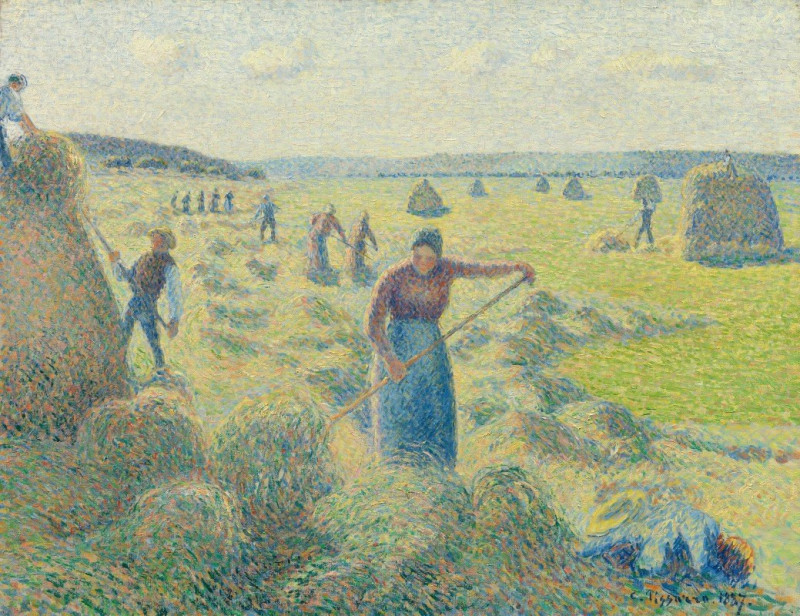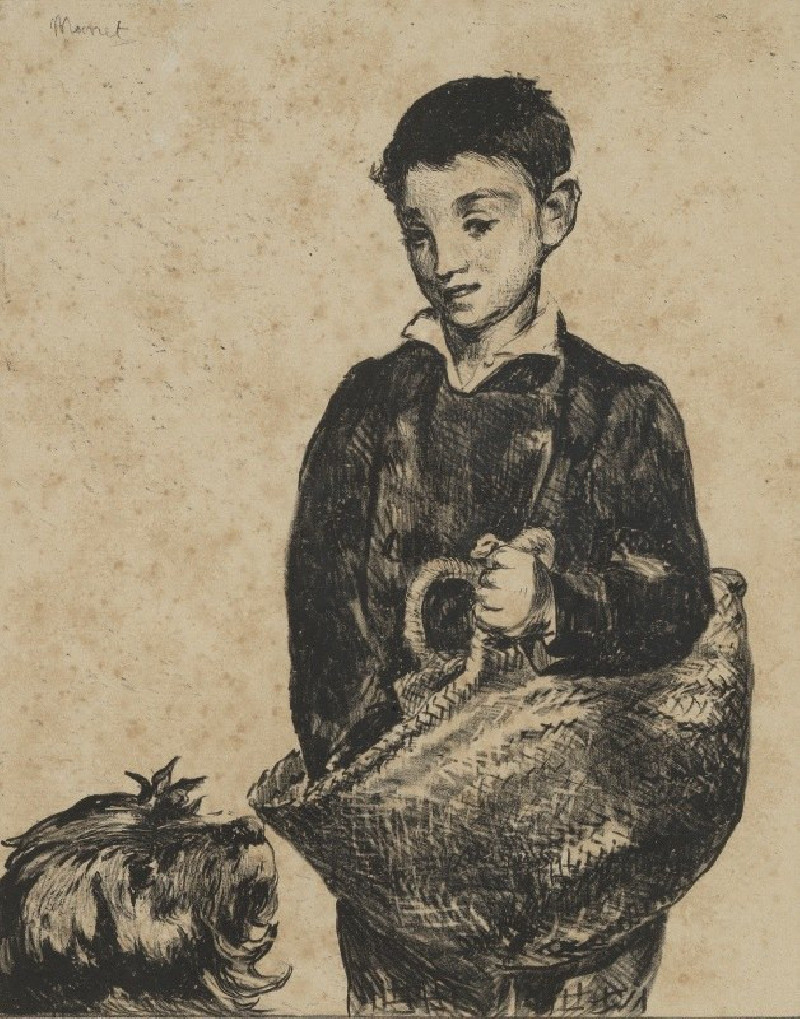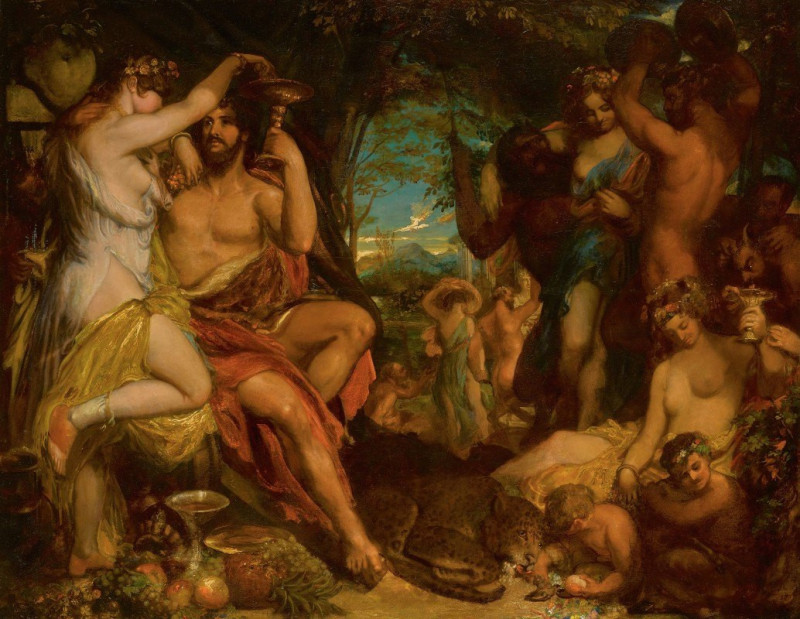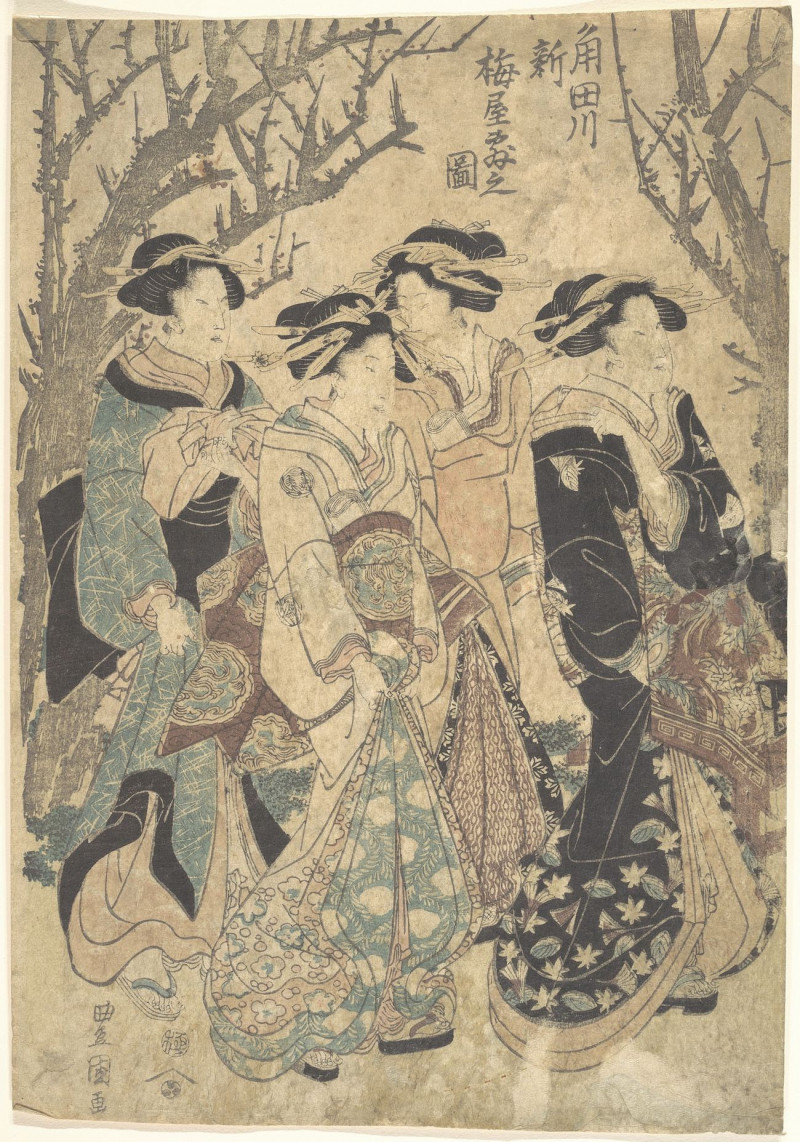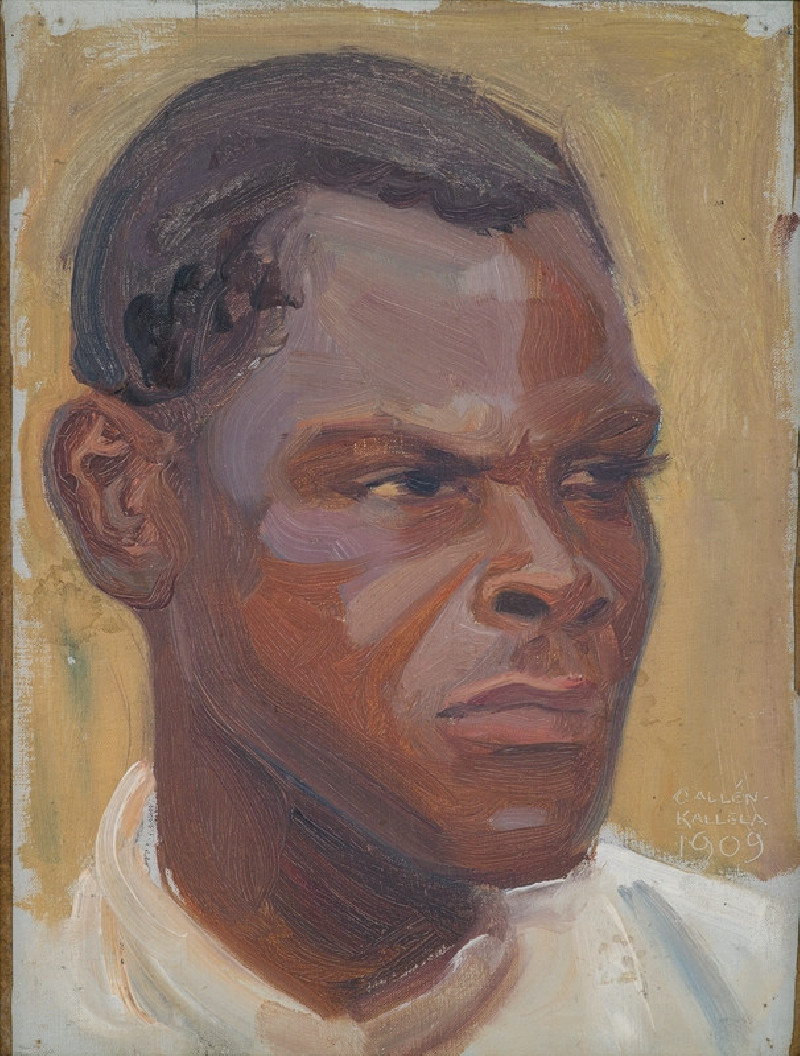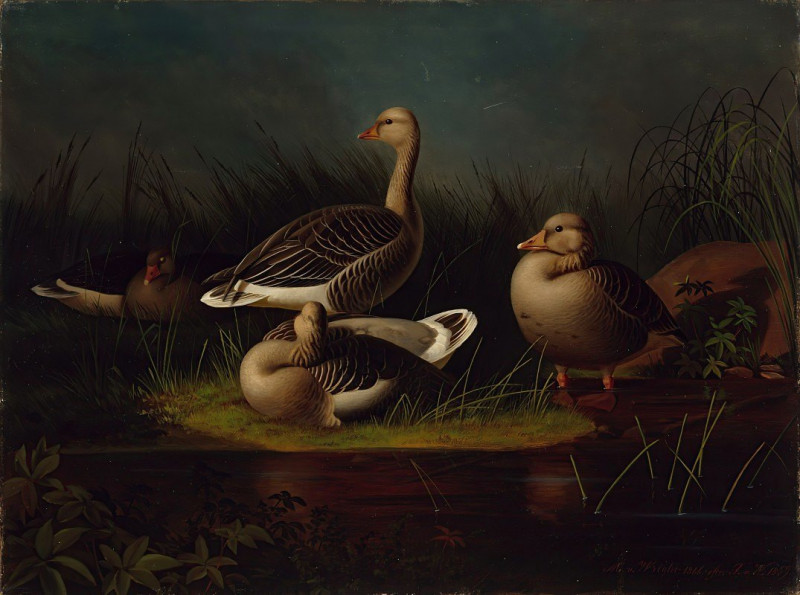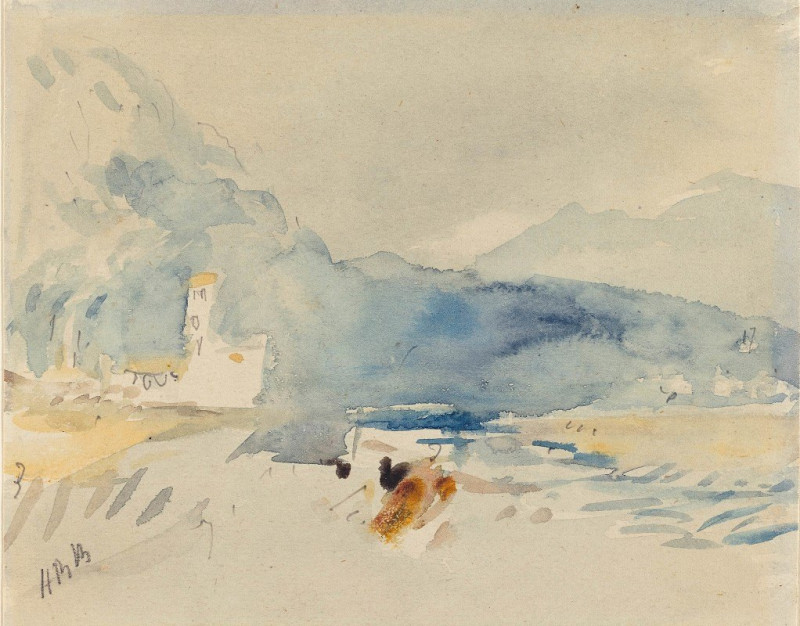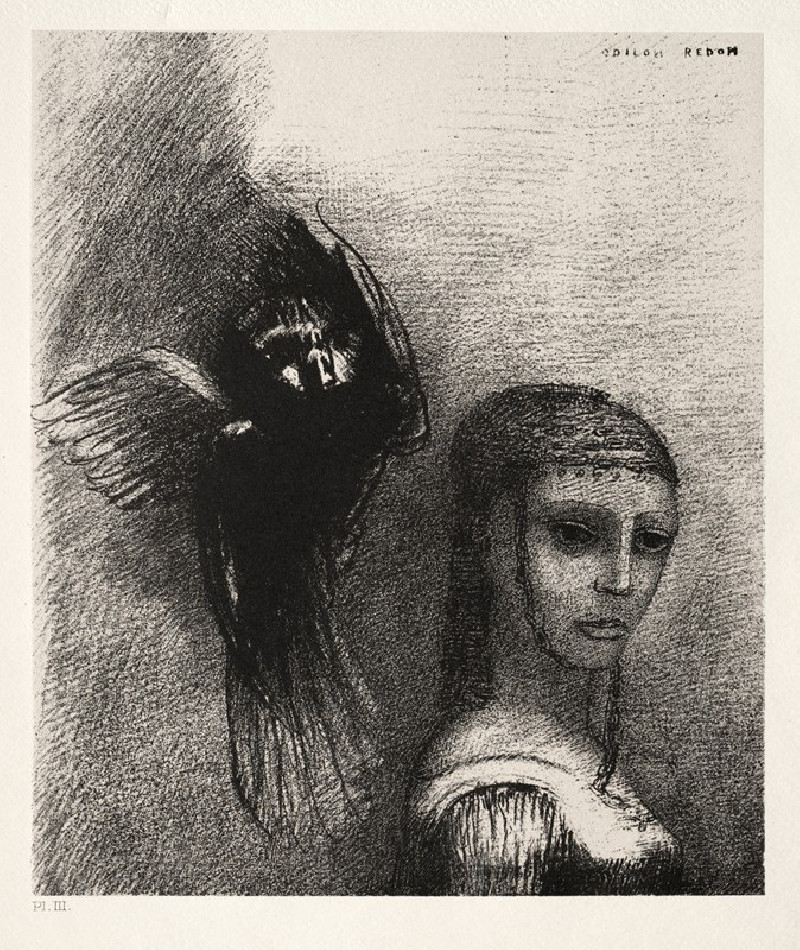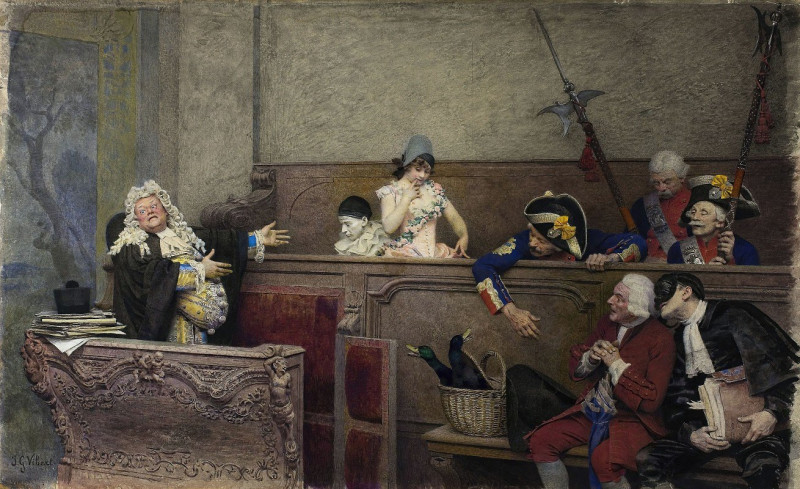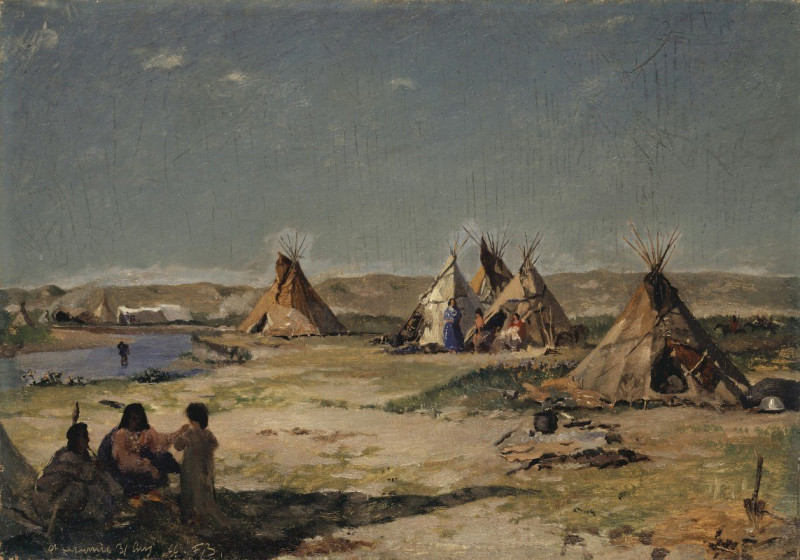La Récolte des Foins, Éragny
Technique: Giclée quality print
Recommended by our customers
More about this artwork
"La Récolte des Foins, Éragny" is a captivating painting by the esteemed Impressionist artist Camille Pissarro, created in 1901. This exquisite work of art presents a serene view of the hay harvest in Éragny, the French village where Pissarro lived later in his life. The scene is a lively tableau of agricultural labor, animated by the rhythmic activities of farmers.The painting is bathed in soft, natural light, highlighting Pissarro’s mastery of the Impressionist style. Pissarro's brushwork is meticulous, capturing the vibrant textures of the hay and the fluid movements of the laborers. The composition is balanced and harmonious, with figures strategically placed across the canvas, contributing to a dynamic sense of depth and motion.Foregrounded are a few figures, each engrossed in their task of raking and gathering hay. Their forms and movements are depicted with a blend of detail and softness, suggesting both the physicality of their labor and the fleeting nature of the moment. The background features gentle hills and a pale blue sky, dotted with white clouds, that encapsulates the expansive atmosphere of the countryside."La Récolte des Foins, Éragny" not only showcases Pissarro’s interest in naturalistic scenes and daily peasant life but also reflects his deep commitment to portraying the rhythm of nature and human interaction with the land.
Delivery
Returns
Blessed are they who see beautiful things in humble places where other people see nothing. — Camille Pissarro
Camille Pissarro (1830-1903) was born on St.Thomas (now the US Virgin Islands) to a Portuguese father and a Dominican mother. He went to Paris to study art at Ecole des Beaux-Arts. He was an early pioneer of pointillism and neo-impressionism and later became a mentor of many famous impressionist painters including Cezanne, Manet, Renoir, and Gauguin. His paintings depicted rural and urban French landscapes and lifestyle. Many of his works politically captured images of peasants and laborers. Today, he is considered the father of impressionism.

